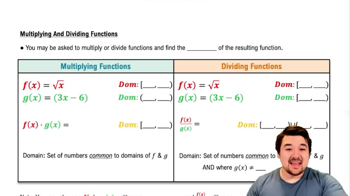Limits of quotients
Find the limits in Exercises 23–42.
limx→−5 (x² + 3x − 10) / x + 5
 Verified step by step guidance
Verified step by step guidance Verified video answer for a similar problem:
Verified video answer for a similar problem:



 5:21m
5:21mMaster Finding Limits by Direct Substitution with a bite sized video explanation from Patrick
Start learning